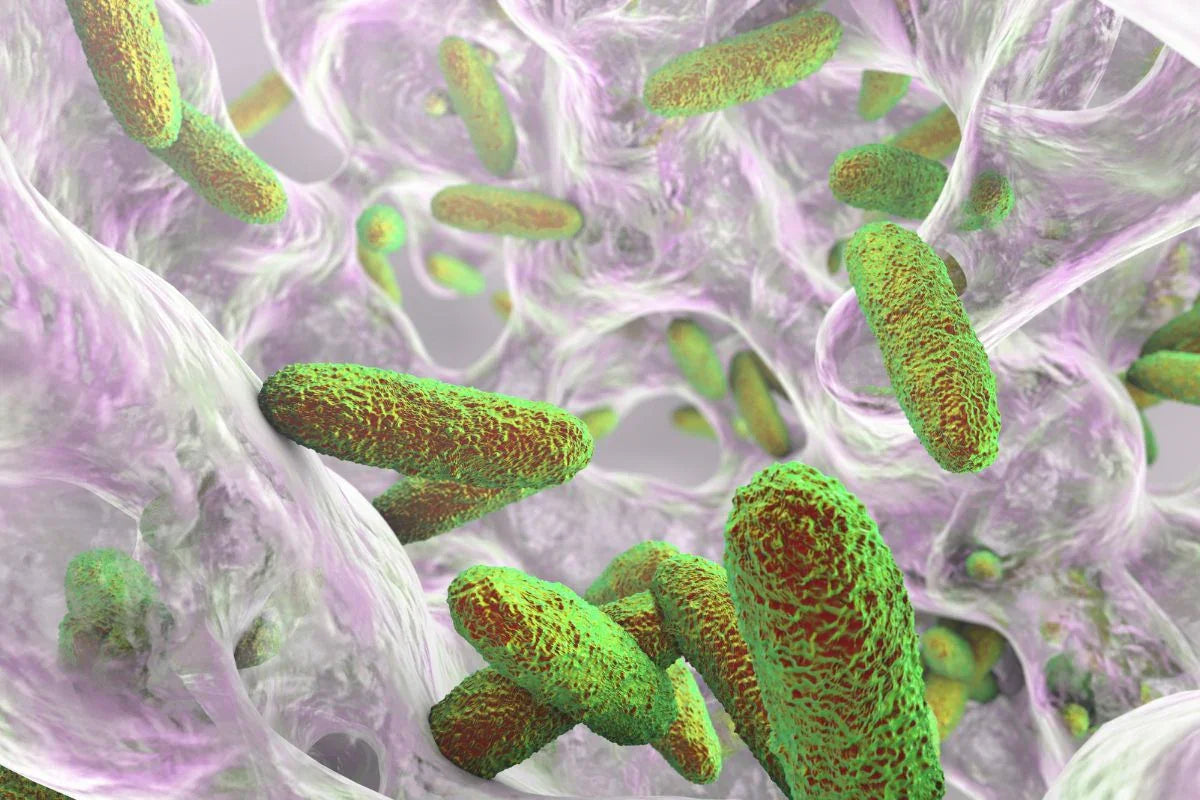
Biofilms are the ideal living environment for microorganisms
When microorganisms form a colony, biofilms are created. These are sticky, slimy structures made of polysaccharides (polymers), providing a well-protected environment for both beneficial and harmful microorganisms such as bacteria and fungi. However, when a microbiome is out of balance, biofilms can form that are undesirable.
Good and bad
Biofilms occur in places such as your intestines, mouth, lungs, eyes, ears, and nose. They are essential for bacteria – both good and bad. The difference lies in their compatibility with the body. Beneficial biofilms support bodily functions, while harmful biofilms do the opposite. The most familiar biofilm is probably dental plaque. As you know, plaque spreads quickly and is very stubborn once you want to get rid of it.
Removing unwanted biofilms
The best way to remove unwanted biofilms is through mechanical means. Think of dental plaque: brushing your teeth properly removes it. However, this is not always possible in other parts of the body. In such cases, specific dietary supplements can help.
Quorum sensing
When bacteria form biofilms, this does not happen randomly. They need to communicate with each other. This happens via a universal molecular communication system called quorum sensing. In short, bacteria “talk” through signaling molecules. They use this to count themselves, determine when an optimal density has been reached, adapt behavior, and form biofilms.
Shut down the communication
Biofilm disruptors interfere with bacterial communication. This is one way to counteract biofilms. Another tactic involves disrupting the growth and stability of the biofilm structure. Reducing the availability of magnesium, calcium, zinc, iron, and manganese destabilizes the structure biofilms are built from. This strips microorganisms of their protection.
Foods against biofilms
There are many different foods and supplements that can disrupt biofilms. Effective products act specifically on unwanted biofilms while leaving beneficial ones intact. Because harmful biofilms can be highly robust and persistent, it’s important to use a powerful product. Our favorite is InterFase Plus from Klaire Labs. The effectiveness of this product has been tested at the University of Calgary by recognized authorities in this field.
Good to know
Breaking down and disrupting biofilms releases bacterial substances into the bloodstream. This may cause a Herxheimer reaction – side effects similar to flu symptoms. Unpleasant but also positive, as it shows the biofilm disruptor is working. To reduce side effects and promote elimination of these substances, you can lower the dosage or use an absorbent such as activated charcoal. Saunas and hot baths also help.



